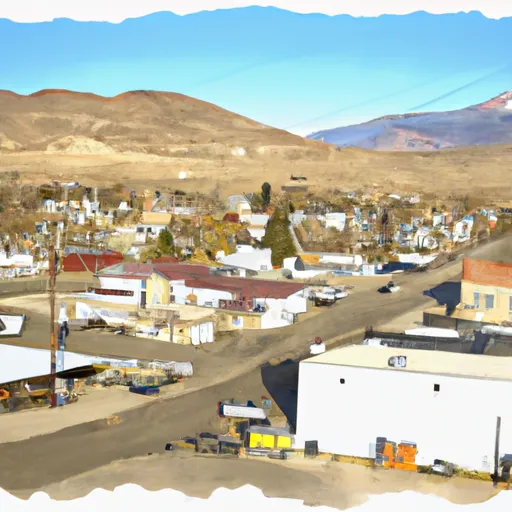-
 Snoflo Premium
Snoflo Premium
Get unlimited access to all our content
With no Ad interruptions! - Start Your Free Trial Login with existing account
Unionville
Eden Index
Climate
8.5
•
Recreation
•
Community
1.0
•
Safeguard
3.7/10

Unionville is a small unincorporated community located in the state of Nevada. Known for its rich history and picturesque landscapes, Unionville offers a unique blend of climate, hydrology, and outdoor recreation opportunities.
The climate in Unionville is characterized by hot summers and cold winters. Summer temperatures can reach highs of around 90°F (32°C), while winter temperatures can drop to lows of about 25°F (-4°C). The area receives around 10 inches of precipitation annually, with most of it falling during the winter months.
Hydrologically, Unionville is situated near the Humboldt River, which provides a water source for the region. The river supports various types of aquatic life and offers opportunities for activities such as fishing and boating.
Outdoor recreation enthusiasts visiting Unionville can explore the beautiful surroundings. The area is known for its picturesque landscapes, including rolling hills, scenic canyons, and stunning desert vistas. Visitors can engage in activities like hiking, mountain biking, horseback riding, and birdwatching. Unionville is also a popular spot for gold panning, as the region has a rich history of gold mining.
In summary, Unionville, Nevada offers a diverse climate, access to the Humboldt River, and a range of outdoor recreation opportunities, making it an attractive destination for nature lovers and history enthusiasts alike.
What is the Eden Index?
The Snoflo Eden Index serves as a comprehensive rating system for regions, evaluating their desirability through a holistic assessment of climate health, outdoor recreation opportunities, and natural disaster risk, acknowledging the profound impact of these factors on livability and well-being.
Climate Health Indicator (CHI): 8.5
Unionville receives approximately
209mm of rain per year,
with humidity levels near 72%
and air temperatures averaging around
11°C.
Unionville has a plant hardyness factor of
7, meaning
plants and agriculture in this region tend to thrive during the non-winter months.
By considering the ideal temperature range, reliable water supplies, clean air, and stable seasonal rain or snowpacks, the Climate Health Indicator (CHI) underscores the significance of a healthy climate as the foundation for quality living.
A healthy climate is paramount for ensuring a high quality of life and livability in a region, fostering both physical well-being and environmental harmony. This can be characterized by ideal temperatures, reliable access to water supplies, clean air, and consistent seasonal rain or snowpacks.
Weather Forecast
Streamflow Conditions
Humboldt
Area Rivers
Humboldt
Snowpack Depths
Humboldt
Reservoir Storage Capacity
Humboldt
Groundwater Levels
Recreational Opportunity Index (ROI):
The Recreational Opportunity Index (ROI) recognizes the value of outdoor recreational options, such as parks, hiking trails, camping sites, and fishing spots, while acknowledging that climate plays a pivotal role in ensuring the comfort and consistency of these experiences.
Access to outdoor recreational opportunities, encompassing activities such as parks, hiking, camping, and fishing, is crucial for overall well-being, and the climate plays a pivotal role in enabling and enhancing these experiences, ensuring that individuals can engage in nature-based activities comfortably and consistently.
Camping Areas
| Campground | Campsites | Reservations | Toilets | Showers | Elevation |
|---|---|---|---|---|---|
| Rye Patch State Park | 45 | 4,149 ft |
Nearby Ski Areas
Catastrophe Safeguard Index (CSI):
The Catastrophe Safeguard Index (CSI) recognizes that natural disaster risk, encompassing floods, fires, hurricanes, and tornadoes, can drastically affect safety and the overall appeal of an area.
The level of natural disaster risk in a region significantly affects safety and the overall livability, with climate change amplifying these risks by potentially increasing the frequency and intensity of events like floods, fires, hurricanes, and tornadoes, thereby posing substantial challenges to community resilience and well-being.
Community Resilience Indicator (CRI): 1.0
The Community Resilience Indicator (CRI) recognizes that education, healthcare, and socioeconomics are crucial to the well-being of a region. The CRI acknowledges the profound impact of these elements on residents' overall quality of life. By evaluating educational resources, healthcare accessibility, and economic inclusivity, the index captures the essential aspects that contribute to a thriving community, fostering resident satisfaction, equity, and social cohesion.

